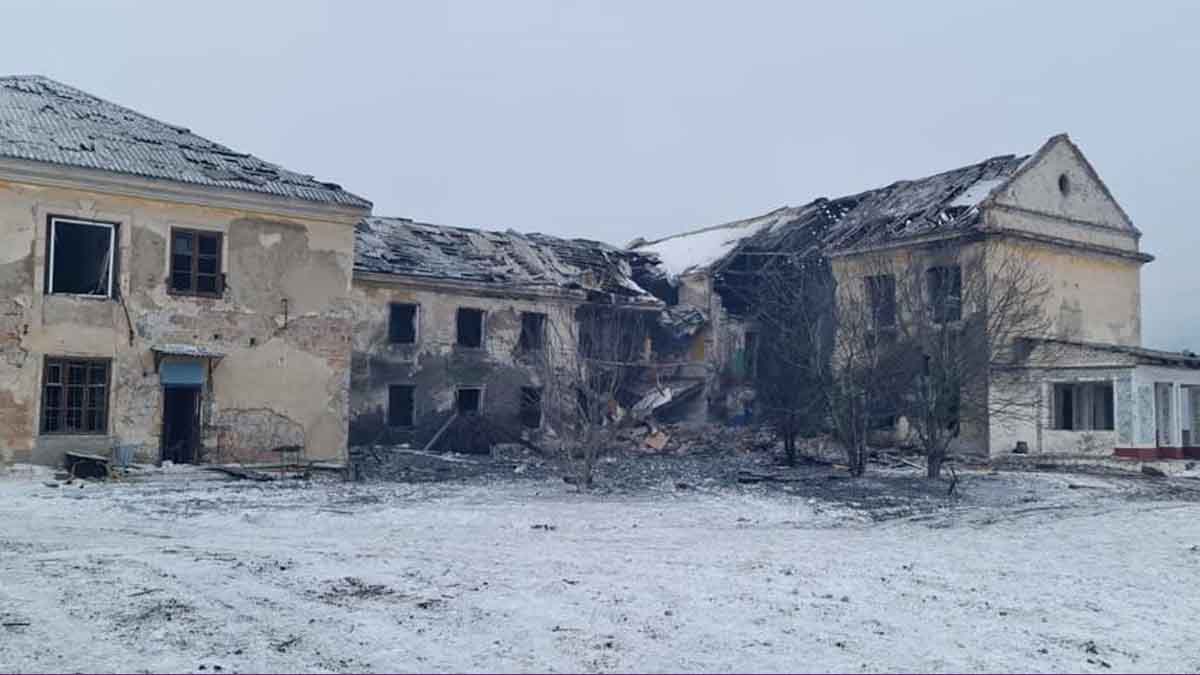Russia-Ukraine War
Ukraine’s Ongoing Struggle: Russia’s Fall/Winter Offensive Culminates

[WBHG News 24] – Seattle, WA As the conflict between Ukraine and Russia persists, recent developments on the battlefield have raised questions about the trajectory of the war. While it may be premature to declare a conclusive victor, signs point to a shifting landscape that presents challenges for both sides.
The Russian fall/winter offensive, initiated on October 6, 2023, has recently shown signs of culminating, raising eyebrows among military analysts. The intensity of Russian attacks has notably decreased, with a 50% reduction in discrete attacks along the line of conflict. This decline, coupled with operational irregularities, suggests significant challenges for the Russian forces.
A key factor contributing to the slowing Russian offense is the staggering losses in heavy military equipment. An analysis of the Oryx Database, which still tracks the Russia-Ukriane War, documented 1,154 pieces of Russian heavy equipment lost from October 1, 2023, to January 2, 2024. Losses include more than 275 tanks, almost 600 armored vehicles, over 175 heavy artillery pieces, seven aircraft, 28 helicopters, and three warships. These losses paint a picture of unsustainable attrition, even factoring in Russia’s military-industrial resilience.
Ukraine, on the other hand, has managed to hold its ground against Russian advances, displaying remarkable toughness in the face of personnel and ammunition shortages. The Ukrainian military has successfully repelled Russian forces in multiple areas. Notably, the Russian offensive at Avdiivka has failed to achieve its operational goals, indicating a strategic setback for Moscow.
Despite these failures, it is essential to remain cautious. The term “culmination” does not equate to victory, and Russia still maintains a significant reserve force poised for potential renewed offensives. However, the current reliance on piecemeal attacks and light infantry reinforces the assessment that Russia is now struggling to sustain momentum.
The Ukrainian bridgeheads on the left bank of the Dnipro and Konka Rivers have become a major problem for Moscow. Despite facing losses, Ukraine has effectively prevented Russia from not only collapsing the bridgeheads but has slowly expanded the area it controls. The Ukrainian military’s success in this regard has come at a cost, but dozens of geolocated videos prove that Russia has lost over 150 vehicles and pieces of military hardware in the Kherson area of operation since October.
Ukraine’s change in tactics has been a notable factor in altering the dynamics of the ongoing war. Fighting a war of attrition, Ukrainian defenders are achieving a much higher kill ratio against Russian forces compared to January 2023. Ukrainian commanders adapted to Russia’s use of human wave attacks.
However, Ukraine is not without its own challenges. The late summer purge of leadership within the military’s commissariat and medical board, coupled with arrests for corruption, has disrupted mobilization and recruitment efforts. Undertrained troops are still being deployed to the frontlines, affecting morale and overall effectiveness.
Ukraine’s struggle with combined arms warfare at the battalion and brigade levels is also evident, highlighting the need for improved coordination of military resources. Additionally, the country faces the impossible task of matching the combined war production capacity of Russia, Iran, and North Korea independently.
The question of whether Ukraine is winning is complex. Russia only captured 182 square kilometers of territory in 2023, mostly before June 1. Continued Western support and boosted war production are crucial for Ukraine to achieve its main military goal of restoring its 1991 borders.
The broader implications of the conflict extend beyond the immediate battlefield. If Ukraine were to succumb to Russian forces, the ramifications could be dire for Europe. Russia’s control over Ukraine’s resources, military infrastructure, and population could reshape geopolitical dynamics, threatening neighboring countries and potentially triggering a broader conflict.
The international community must remain vigilant and consider the potential consequences of a shifting tide in the conflict, understanding that the outcome holds implications not only for Ukraine but for the stability of the entire European region.
You can read our full analysis on our Patreon, where we offer a seven day free trial membership, no credit card required. Your subscription helps support independent journalism.










